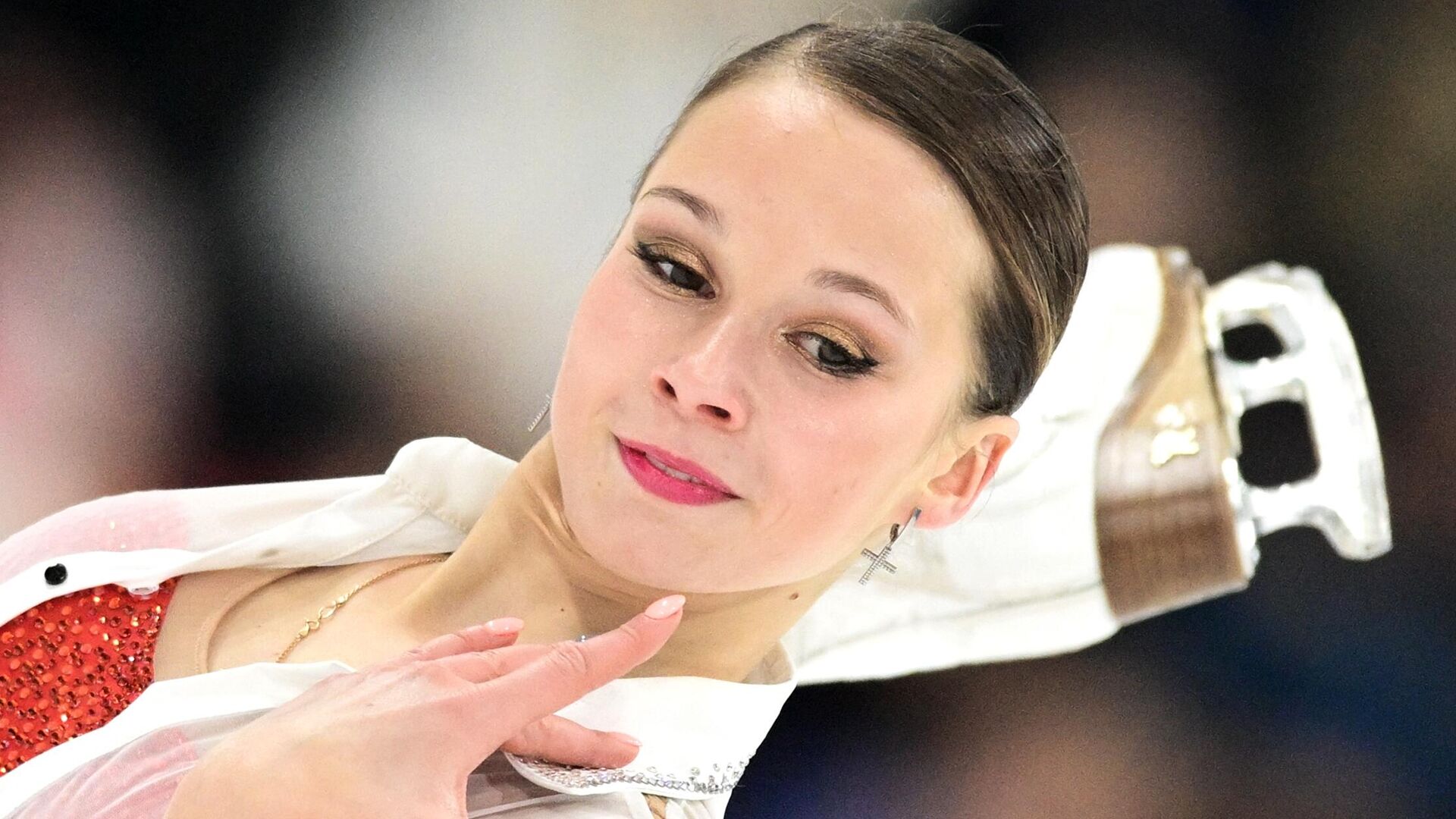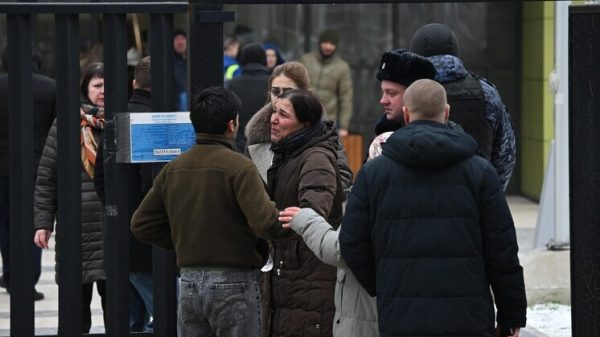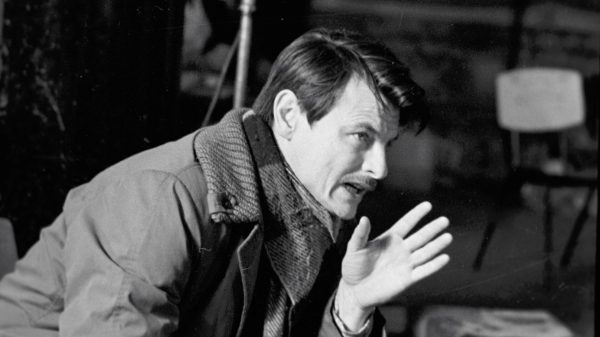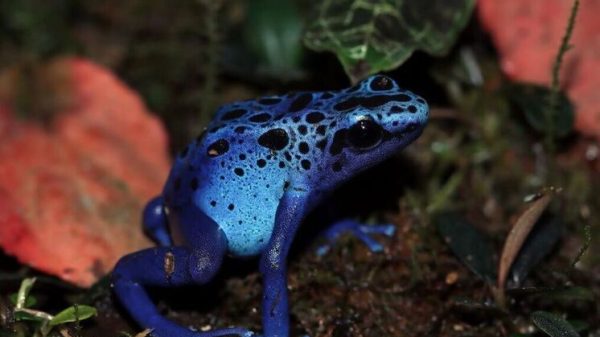
br>
Ksenia Sinitsyna amazes viewers with her sense of music and unlike programs. On Sunday she won the Russian Grand Prix in Samara, ahead of Eteri Tutberidze. In an interview with Sport, the figure skater spoke about the coaches who put up with her, the secrets of gliding and the horror of pair skating.
“I skated everywhere, even in shopping centers”
— When points for free program appeared on the scoreboard, it seemed that there was no one happier in the arena than you.
— The emotions were indescribable. They were somewhere above my head. I still have a smile on my face.
— In the mixed zone you said: “Thank you to my coaches , that they continue to train me.»
— Well, put up with me, you know…
— Do you have to?
— For what?
< br>
— Sometimes something doesn’t work out in training, you get frustrated, then it doesn’t work out again. This infuriates the coach, but you continue again… So I thank them very much.
— I understand correctly that in addition to the story of the fracture in preparation for the season, there was also a strange story with the closure of the skating rink. What was that?
— We have a constant history. Our skating rink is closed until August to defrost the ice, and I don’t even know why it’s taking so long. We go on vacation from May 25th, we leave around June 12th — and it’s always a big problem where we will study. Now we don’t have the “Snow Leopards” (club), but a figure skating academy, and they provide us with ice at other skating rinks.
Sometimes there are different places. One day we ride on «Inspiration», on another we go to Ryazanka to «Meridian». During the season, thank God, there were no such problems, but we had summer training camps at Inspiration. No change of scenery, nothing…
— Routine?
— There is little. But we had a rest — thank God.
— A year ago, there were even more problems with ice.
— Yes, we even had to go to public skating in shopping centers. The space on the skating rinks began to be reduced, and our skating rink was closed for repairs for six months. Then we went to Kosino to skate, because at other skating rinks we were given a maximum of an hour of ice a day. This is very little for preparation, which is why there was such a decline that season.
This time we were given «Inspiration», and there was really a lot of ice there. We were there almost from 9 am to 8 pm. They gave three ices a day, choreography, general physical training — there was very serious preparation.
— This is probably why it was so disappointing that this happened history with a fracture?
— Of course. I really wanted to go out and show myself — and here was such a ridiculous situation. I was very upset. But in general I tried not to be discouraged. Injuries in sports are common, so there is no point in giving up.
“To live up to Tuktamysheva’s age”
— Do you even recognize yourself as an old enough figure skater?
— After Liza Tuktamysheva, it turns out that I really am the oldest. As for age, a certain rethinking of oneself appears. You go out on the ice and you can already reconfigure something in your head, control yourself better. Not like children who sometimes take off in a jump and don’t know where they’ll land. And you already clearly understand what you need and at what moment. This is probably why the impression of more confident, mature skating is created. All that remains is to reveal your potential further.
— “Further” — where is this?
— I wouldn’t like to think too far. You never know how things will turn out — at least let’s remember the situation with my fracture. But Liza Tuktamysheva has been an absolute authority for me since childhood, and I would really like to live up to that age in sports. This is a very difficult path, of course. Even now, when I had injuries, it was not easy mentally, there is a lot of pressure on you. And Lisa struggled with all this for many years, throughout her career. This is very inspiring.
— Can you tell us how this luxurious glide of yours came about?
— We work a lot with coaches, Svetlana Vladimirovna Panova devotes a lot of time to our skating, so that we lay the ribs correctly, the skating is softer and easier. We have a training day from 8 am to 2 pm, and on the first ice we usually spend 45 minutes just skating.
During this time, we begin to do everything from loops to running steps. We develop our feet so that later it will be easier to ride, make tracks, and jump. Good gliding helps a lot in jumping. (American coach-choreographer) Vera Anatolyevna Harutyunyan also made a very big contribution to this. When she comes to us, we devote all our ice training to skating and don’t do anything else. And after her exercises we go out — and the jumps happen by themselves. You positioned yourself correctly, you have an edge, you understand the technique — and everything works.
We, for example, could spend a whole hour practicing the “three” step. But then you go to flip and don’t understand why it’s so easy? How do you jump it double, in a relaxed state.
“Chen was shown the approach to the jump on me”
— You also went to Rafael Harutyunyan for an internship?
— Yes, in the summer of 2019. Their view of figure skating is different from ours. Rafael Vladimirovich is a very cheerful and interesting coach. I would, of course, really like to work with him again, but, unfortunately, there are no such plans for now. Due to difficulties with flights, this is almost impossible, so for now only Vera Anatolyevna flies to us.
— Have you crossed paths with Nathan Chen?
— Certainly! I remember that at that time he combined studies and active training, and for me it was simply fantastic. He is a very gifted, versatile person. Despite his love for figure skating, he does not forget about ordinary life. I want to be like him in this.
— Did you manage to communicate with him?
— Only ask for a photo – that’s all. Although once we trained together, and Rafael Vladimirovich showed Nathan, using my example, how to approach a jump. Because the better your approach, the better and easier everything will turn out.
— When you ask someone to describe your style of skating, they usually say that it doesn’t matter what the place is, the main thing is that it’s art. How do you perceive yourself in this sport?
— Of course, I get great pleasure from skating. Even now, in this free program, the exchange of energy, music, and skating with the audience really inspired me. I want to skate even cooler, put in more interesting tricks.
For me, this is not just, you know, “figure skating”. Is this…
— Creativity?
— Exactly. Like an artist, he paints a picture, then he looks at it and gets a kick out of himself. I also want. If you underestimate yourself, people read it, and it no longer energizes you. And if you are positive, people themselves are drawn to you.
— Now you are probably glad that you didn’t go into couples at one time?
— Very! Especially after what I saw among the juniors here in Samara. A terrible fall, simply terrible. Taking this opportunity, I would like to wish Varvara Medvedeva great health. As soon as I looked at it, I immediately crossed myself. Another couple was making a spin — and the boy did not catch the girl. Right before my eyes. Such a love for single skating has suddenly awakened! performs.
— Alena is simply much more reckless and fearless than me. She has no boundaries and is very strong-willed. I'm probably not like that. After a few days I became scared, and I decided that I was better off here. My goal is to jump quadruple, I will work on it.
— Do you still want a quad?
— Yes, I really want it restore. I even have a video from training, where I jump a quadruple toe loop and a triple axel without a fishing rod. I’ll tell you them now in secret!
It will probably be difficult to do a triple axel in competitions. You jump into it face first, it's a little scary. And it’s really possible to master a quadruple sheepskin coat. It also flies higher due to the push.
— And quadruples – isn’t that scary? We talked about the fear of paired elements, and here, too, the height is still the same.
— It seems to me that the period of fear has already passed. Now ultra-si have already become the norm. On the contrary, you look at other girls and think — if they could jump, then why can’t I? I need to put the finishing touches on them.
— Do you still have your Olympic dreams?
— We have a very strong younger generation, and the situation is still unclear with the international arena. But, of course, the Olympics are the end point of any athlete.
At the end of the interview, Ksenia actually showed a video with a clean triple axel and quadruple toe loop in a double cascade. I confirm – the jumps are amazing. But you can see them with your own eyes only at competitions. This is Ksenia’s position: “They should be done at the start, not like that.” So we wait and believe!






















































Свежие комментарии